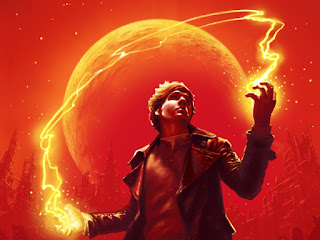 |
Earlier this month I shared an article on why fantasy is so popular for role-playing games (RPGs). (Link to article.) There were a number of responses at different locations where the article was shared, but Greg left a response with the article that started me thinking about some differences between fantasy and other genres. One of his points was about magic, and that got me thinking more about the role magic plays in fantasy setting games.
I have the opportunity of reading a variety of RPG books—I write articles, including review of games, for a local magazine (Utah Geek Magazine). This does not make me an expert, it just means I read a lot of RPG books and I'm exposed to variations on the theme. The real experts are those who create the systems, making the different components work together so they complement the whole.
I have read and played fantasy based RPGs with no magic to systems where every character has some level, or type, of magical ability built into them. Every system has certain basic elements it must address for a gaming system, no matter the level of the magic. But, there are elements in games that use magic that are designed in to create a specific and different feel for their game.
Changing the game system, which, many times, includes changing editions, means the game structure changes. When looking at the magic system within a particular game, how the game is structured affects the magic system. A point based system will play differently than a level based system. Systems designed with differing prerequisites (levels, or other spells and abilities) create affects specific to the system. They also influence the development of the characters, the settings, and the plots.
 |
Fantasy Magic from wall.alphacoders.com |
If you have converted an adventure from one system to another, you have experienced the gaps between not only the gaming systems, and the magic system. I have found the games with more highly developed magic systems are harder to convert to a different game setting. This is usually because the more advanced systems are addressing all of the nuances that have been identified over previous play, and have created some level of heartburn for a player or, more specifically, a game master (GM). These types of changes usually started at the tabletop.
Introducing changes at the table for the magic system of a particular game or campaign is also going to give the game a different feel. I have seen this really come across in a game where magic was available, but was considered evil unless it was clerical magic. In another game, spell casters were rare individuals and were held in high regard. Neither of these were directly changing the magic system, but how the magic was perceived within the game setting. I have also played in a historically based system where magic didn't exist at all. These were all done with alterations in the game, but not the system.
Magic can also be involved in genres other than fantasy. Even though magic sets fantasy apart from other genres, there are settings where complex magic systems are involved. Some crossovers are popular settings, like Darkover, Dragon Riders of Pern, and Star Wars.
Magic, in any of its manifestations, provides gamers a level of control over events through means of extraordinary actions. I have seen how different people gravitate to a favored system, either for ease, familiarity, desired results, etc. And, fantasy settings allow for an increase in variability because you don't, and can't, explain it through the logic of the real-world we are locked in.
 |
Fantasy Magic Girls from Desktophive.com |
Magic helps define the genre, helps create a popularity for it. Moreover, magic can change the flavor of an RPG, either on the system, campaign, or even the specific gaming session. There are enough systems out there to allow every style of play people would like to try. If you are looking for something for a particular setting, you can take a system that is close and tweak it to get the desired results.
With all this said, I don't think there is a winner-take-all system. Each has been developed for a specific purpose within the system. I have seen more overlap between systems than anything else, which is to be expected.
Greg commented how he prefers Numenera, and I am interested in what other systems people prefer because of their magic systems.
If you have any comments, questions, or critiques please leave a comment here, or send an email to guildmastergaming@gmail.com.

































